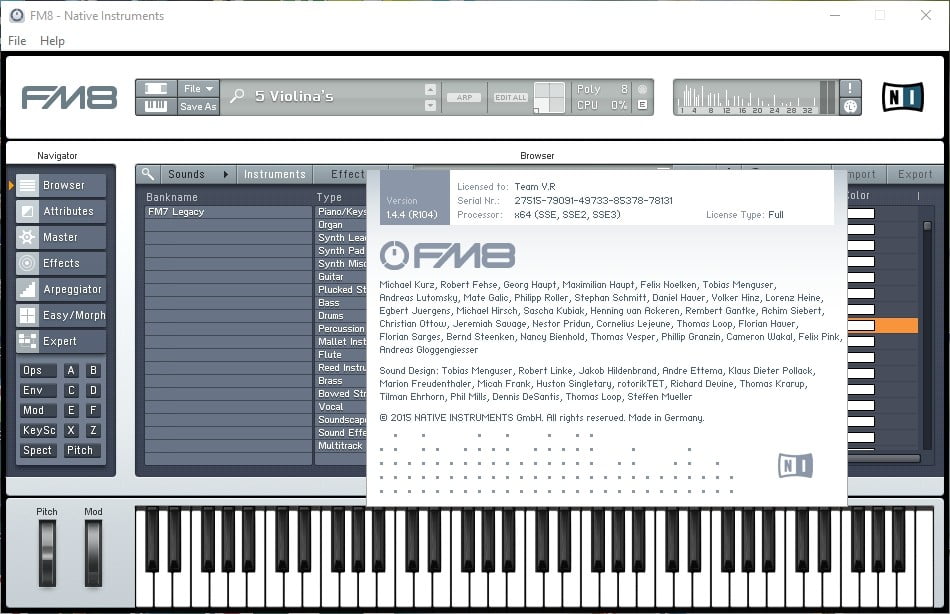

With the addition of a personal computer, a musician could record a MIDI performance, edit the MIDI data, and then play it back. The introduction of digital synthesizers and MIDI in the 1980s increased the popularity of synths in music production.
#Native instruments fm7 soft synth professional#
At that time, companies such as Moog, ARP, and others, began mass-producing professional musical synthesizers based on analog circuitry. Going back at least as far as the late 1960s, synthesizers have always played a role in music production. Augmenting or sometimes replacing conventional synthesizers, softsynths are making an impact on our industry, and on how we compose and produce music.

#Native instruments fm7 soft synth software#
One area in which things are now heating up is in the development of software synthesizers, also known as softsynths, or virtual synthesizers. As a result, many studios now rely heavily on computers for the recording, editing and even mixing of a music project, and this trend will continue as computer hardware and software capabilities continue to evolve. Computers, for example, are faster, more powerful, and considerably cheaper than even a few years ago. As the technology advances offering us greater and greater possibilities, the way we do our work changes as well. High-quality music-production tools are now available to all of us, and prices continue to fall as capabilities increase. The tools we use to produce music are constantly evolving, and in recent years the pace has increased dramatically. When it comes to music technology, things change quickly. The emergence of softsynths and various audio plug-ins promises new options and sounds.


 0 kommentar(er)
0 kommentar(er)
